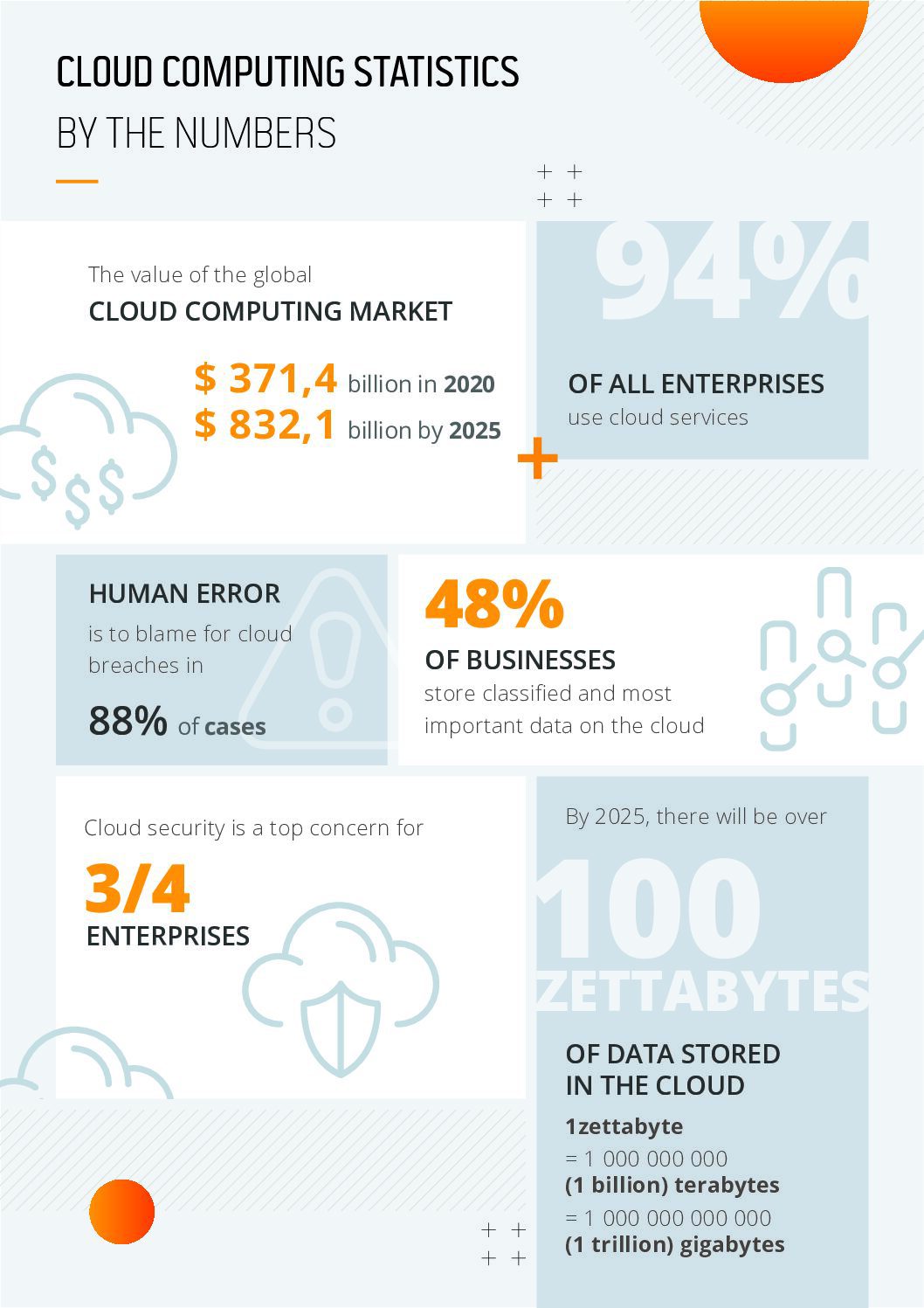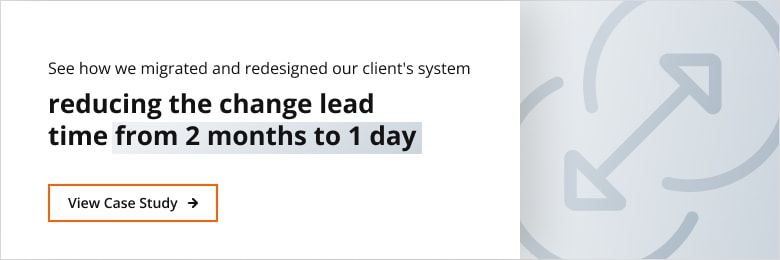
Elasticity and scalability in Cloud Computing: what do you need to know?
Technology and business strategy must align for success. In the era of cloud computing, cloud services are becoming essential in the areas of organisation’s infrastructure, costs, security, performance, availability, and reliability. Let’s add one more criterion to the list: cloud computing elasticity and cloud computing scalability.
What is scalability and elasticity in Cloud Computing?
After Gartner Glossary, “cloud service elasticity is the ability to increase or decrease the amount of system capacity on demand, in an automated fashion”. In other words, elasticity in cloud computing refers to the ability of a cloud to automatically expand or compress the infrastructural resources on a sudden up and down in the requirement so that the workload can be managed efficiently.
Scalability in cloud computing can handle the changing needs of an application within the confines of the infrastructure via statically adding or removing resources to meet applications demands if needed.Turbonomic BlogCloud Elasticity vs Cloud Scalability
However, the term is commonly used where the persistent deployment of resources is required to handle the workload statically. In cloud computing, scalability can be vertical and horizontal.
Horizontal scaling involves adding more resources to the system, while vertical scaling means enhancing the performance of existing ones.

How “the cloud” entered computing
Although the first services resembling what it is today appeared in the 1950s already, it wasn’t until the 1990s that internet-based, distributed computer systems with multiple servers started being referred to as “the cloud”.
Things started moving seriously in the cloud sector only in the late 2000s. As more giant companies have embraced digital transformation strategy, it has become an integral part of their IT DNA.
Large corporations and regular third-party cloud providers, like Amazon, IBM, or even NASA, saw cloud computing’s immediate advantages: on-demand availability, agility, migration flexibility, pay-per-use, or broad network access from the beginning. If you use WhatsApp, Google Calendar, Microsoft 365, or Zoom, you already avail of those features in your everyday life.
But because cloud computing combines data storage capacity with the actual calculation power, two other factors are also important for its users.
The importance of Cloud elasticity and Cloud scalability
Although cloud elasticity and cloud scalability are two different things, they often go hand in hand. Together, they have the power to help make effective cloud cost savings and ensure business continuity and disaster recovery with minimal downtime when unforeseen or underestimated circumstances come into play.
Read more about Cloud infrastructure and its benefits:
Cloud strategy: the essential guide for planning and implementation
Infrastructure as a Service in cloud computing
Accelerating digital transformation through the cloud
Different types of Cloud scalability
Various scalability strategies are employed for optimal performance, availability and cost-effectiveness. By strategically implementing one or more of these approaches, organisations can ensure their systems are well-equipped to handle varying demands.
Scalability in cloud computing is the extent to which the system can handle the growing demand for service. It usually happens by adding more resources if, when, and where they’re needed (and provided it’s feasible to do). So if there are not enough virtual machines to do a particular job, more servers would be “delegated” to it.
Let’s explore the three types of cloud scalability mentioned:
Vertical scalability (Scale-up)
Scaling up (vertically) means adding more resources to an existing server or instance, expanding its capabilities. The processing speed, memory size, and storage space are only some components that can be upgraded. This method is ideal for programs that do a small number of resource-intensive operations and require a speed boost.
Compared to adding more servers, the initial costs of implementing vertical scalability are typically lower, but there is a limit to how much a single server can be scaled this way.
Horizontal scalability
Horizontal scalability, often known as scale-out, increases a system’s throughput by distributing the work across more resources, such as servers or nodes. This method is ideal for programs dealing with a growing user base or sudden traffic increases.
With horizontal scalability, you can easily add more resources whenever needed, allowing for virtually unlimited growth.
Diagonal scalability
With diagonal scaling, an organisation can grow vertically until the server’s capacity is met. At this point, they can clone the server to add more resources as needed. This method lets businesses be flexible and quick to scale up or down, making it a great choice for companies that have to deal with unpredictable surges.
Different types of Cloud elasticity
In business and economics, elasticity refers to the degree of change, to which individuals, customers, producers, and suppliers alter demand and supply when variables like income are changed in time.
The two main elasticity types are the elasticity of demand and supply.
From a different point of view, elasticity types can be:
Price elasticity of femand (PED)
It measures the responsiveness of quantity demanded to a change in its price. The concept of the PED was introduced in 1890 by Alfred Marshall, and it is considered as the change of percentage in quantity demanded in response to a one per cent change in price when other determinants of demand are constant.
Cross elasticity of demand (XED)
So-called Cross Elasticity of Demand (XED) is an economic concept that can measure the responsiveness in the quantity demanded of one good when the price of other goods changes.
It is also called cross-price elasticity of demand, and it is calculated by taking the percentage change in the quantity demanded of one good and dividing it by the percentage change in the price of the other good.
Income elasticity of demand (YED)
It is also possible to measure the responsiveness in the quantity demanded for a good or service when the consumers’ real income is changed. The formula for calculating the income elasticity of demand is the per cent change in quantity demanded, divided by the per cent change in income.
This concept helps us find whether a good is a necessity or an unnecessary expense.
Price elasticity of supply (PES)
It can measure the responsiveness to the supply of a good or service after a change in its market price. Let us explain: when there is an apparent fall in the price of a good, its supply is also decreased, and when the prices are on the rise, the supply is increased.
In conclusion, these four types of elasticity measure the responsiveness of two main economic variables, demand and supply, when other market variables are changed.
What does rapid elasticity in Cloud Computing mean?
Cloud computing relies on rapid elasticity to accommodate sudden or seasonal demand by automatically and quickly expanding and contracting available resources. In other words, it enables businesses to easily scale up or down their computer power in response to swings in workloads.
How to measure elasticity in Cloud services?
As can be seen, to measure elasticity, you must consider the time and the demand. Elastic computing is usually associated with scale-out solutions or horizontal scaling, allowing users to add or remove resources dynamically when needed.
Elasticity is typically connected to public cloud resources and is associated with pay-per-use or pay-as-you-grow services. This is the perfect solution for IT managers when paying for more resources that are consumed at a particular time is unnecessary.
Everyone can imagine a giant like Amazon and its online shopping site, whose transaction workload increases during the festive season like Christmas. During this period, special service is indispensable.
When the season goes out, the giant resources are no longer necessary. Elastic cloud computing enables efficient workload demand management, ensuring a smooth experience for customers.
What is the difference between scalability and elasticity?
Cloud elasticity and scalability are sometimes used interchangeably, but the two processes, however similar they sound, differ in their approach. Let us have a look at scalability versus elasticity.
The differences between cloud elasticity and scalability are given in the table below:

“Cloud nine” computing
The biggest advantage of cloud computing is that there’s no need for expensive data centers, on-premises physical infrastructure, or vast hardware. It’s all, virtually, just a few clicks away.
So it shouldn’t be a surprise that the customer circle persistently grows. According to statistics, “94% of enterprises use cloud services” in 2022. The cloud adoption rate for infrastructure is equally impressive, sitting at 67%.
Share of corporate data stored in the cloud over time (Data Source: Zippia.com)
Cloud platforms are now an almost mandatory addition to successful businesses. There’s no doubt that those impressive results are also due to the scalable cloud architecture and its elastic processing power.
So you could risk a statement that cloud computing is like “being on cloud nine” in the IT sector. Because many common problems related to maintaining physical hardware simply vanish into thin air.
How elasticity and scalability in the Cloud could help your business?
According to a study by Wakefield Research, 92% of organisations are either amid app modernisation or are planning to. The research shows that many of these modernisation projects run into trouble. “As the projects progress, they become more complex, expensive, and riskier”. That is the area for experts in cloud computing scalability.
In order to successfully adapt cloud solutions, a smart system is indispensable. Cloud elasticity and cloud scalability can differ from each other, but together they have got real power.





